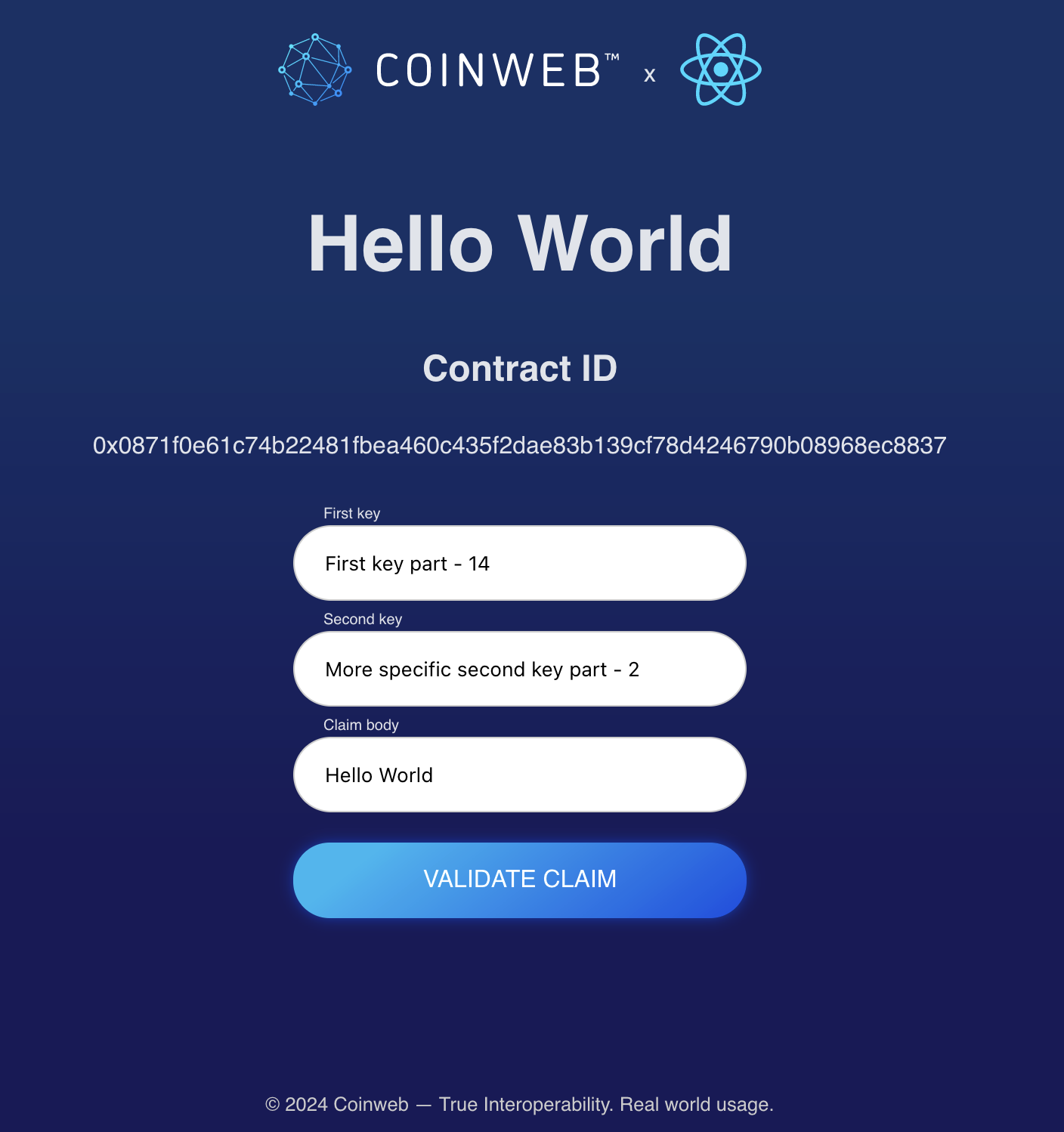Getting Started
All contracts by default are interacting with the Coinweb DEVNET (you can find its explorer here). It is a public test network and no registration is needed. You may or may not experience some delays or outages.
The following is the simplest way to create a new
Coinweb dApp project. It will create the Hello World
example in the directory called
my-dapp inside your current folder. The
created workspace includes a yarn monorepo with a
contract module and a simple UI with the most basic
interaction possibilities.
The public repository for the Hello World example can be found here.
Prerequisites
Before starting, please make sure you have the following installed:
-
Node.js, version
^20.12.0 || ^21.7.0 || >=22.0.0 -
Corepack, installed globally
npm install -g corepack
Coinweb modules and repositories rely on
corepack
which is a zero-runtime-dependency package
acting as bridge between Node projects and their
package managers. If you have not enabled it,
you need to enable it by running:
corepack enable
Additionally Yarn Berry is used as the package manager. It is not needed nor possible to install it globally. It will be preset per project.
Create Your First dApp
create coinweb-dapp is an officially
supported way to create Coinweb dApps. It offers a
modern build setup with no configuration.
npm.coinweb.io is the official Coinweb
public npm registry.
- npm
- yarn
npm create coinweb-dapp@latest
yarn create coinweb-dapp
This will setup a default Hello World dApp in the
my-dapp directory and install all
dependencies utilising Yarn Berry which is preset
within the project. You can check the folder
structure explanation
here
to have a better overview over the files and
folders.
Inside the contract module's package the
src/onchain folder contains the
smart contract logic and the
src/offchain folder contains the
offchain logic which is used to interact with
the smart contract applications front end or
back end. Read more about working with contract
modules
here.
Build the Modules
cd my-dapp
yarn build
The project's root build script is
used to build the contract module and the UI
subsequently. This is important when one module is
another one's dependency and therefore the
dist folder has to exist before the
other module can be built. In this example all
contract modules are built first. You can find the
build script in the
package.json
file:
Publish the Contract Module to Coinweb
After your project was built successfully, you can deploy the contract module to Coinweb.
yarn deploy-contracts
The smart contract is published to Coinweb by the
root yarn deploy-contracts
script. After publishing a smart contract to Coinweb
it can be invoked/called by anyone. The transaction
id that deploys the smart contract is printed by the
script and can be tracked at the
DEVNET explorer.
Call the Deployed Contract
To execute the root-level script that calls the deployed smart contract, run:
yarn call-contracts
Calling the smart contract executes the logic in the
smart contract. This logic writes a claim containing
the words "hello world". The
transaction id that invokes the smart contract is
printed by the script and can be tracked at the
DEVNET explorer
Finally we can check that the
"hello world" claim was
actually written by executing a program in the
dapp-ui folder.
yarn workspace dapp-ui dev
It will show the UI for hello world. You can
superficially interact with the contract by changing
the parameters and validating them by clicking the
button. All the UI component does is fetching the
deployed claim from Coinweb by utilising the
@coinweb/wallet-lib and displaying it
in a form

Keep on reading to familiarize youself with more complex examples and the underlying concepts. The possibilities using Coinweb are endless.